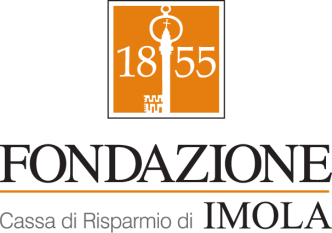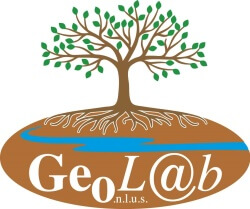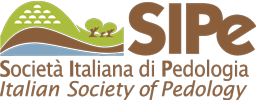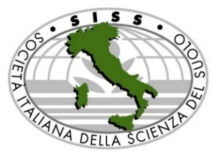An approach to improve sustainability: performance of Strychnos potatorum seed as a natural coagulant in water treatment at tourist sites
DOI:
https://doi.org/10.6092/issn.2281-4485/21156Keywords:
Strychnos potatorum, coagulation, physical, chemical, biologicalAbstract
Water is obviously an essential need for all living beings. The most important aspect is water quality for drinking purposes. In January 2024, water samples from Courtallam and Karaiyar were collected in order to test the water quality. In the current work, an attempt has been made to study the physical, chemical and biological characteristics of collected water. The obtained data were analysed with BIS. Additionally, an approach has been made to study the efficacy of Strychnos potatorum seed (SPS), a natural coagulant, for purpose of treating water. According to BIS, before treatment with SPS, both the collected water samples have shown the physical and chemical qualities as potable, but not biologically which shows the Fecal coliform is uncountable in both samples. After treating with SPS, as a remedial measure, the Fecal coliform is countable (decreases) and physically potable but chemically not potable as the value of pH is below the minimum permissible limit and the value of NH3 exceeds the maximum permissible limit. The study strongly recommends to constantly monitor the quality of drinking water in the region and also suggest the natural coagulant, for removal of bacteria and turbidity from water to protect the health of the people.
References
AHN M.K., CHILAKALA R., HAN C., THENEPALLI T. (2018). Removal of hardness from water samples by a carbonation process with a closed pressure reactor. Water, 10(1):54. https://doi.org/10.3390/w10010054
ANDERSON C.W. (2005) Turbidity 6.7. USGS National field manual for the collection of water quality data, US Geological Survey. https://doi.org/10.3133/twri09
ATWEBEMBEIRE J., BAZIRA J., KAGORO G., YATUHA J., ANDAMA M., LEJJU J.B. (2018) The physico-chemical quality of streams and channels draining into River Rwizi, South Western Uganda.
https://doi.org/10.4236/jwarp.2018.109047
BABU R., CHAUDHURI M. (2005) Home water treat-ment by direct filtration with natural coagulant. Journal of water and health, 3(1):27-30. https://doi.org/10.2166/wh.2005.0003
BENALIA A., DERBAL K., KHALFAOUI A., PIZZI A., MEDJAHDI G. (2022) The use of as natural coagulant in algerian drinking water treatment plant. Journal of Renewable Materials, 10(3): 625.
https://doi.org/10.32604/jrm.2022.017848
GAIKWAD V.T., MUNAVALLI G.R. (2019) Turbidity removal by conventional and ballasted coagulation with natural coagulants. Applied Water Science, 9(5):1-9. https://doi.org/10.1007/s13201-019-1009-6
GARCIA-FAYOS B., ARNAL J.M., RUIZ V., SANCHO M. (2016). Use of Moringa oleifera in drinking water treatment: study of storage conditions and performance of the coagulant extract. Desalination and Water Treat-ment, 57(48-49):23365-23371. https://doi.org/10.1080/19443994.2015.1117820
HOEK E.M., JASSBY D., KANER R.B., WU J., WANG J., LIU Y., RAO U. (2021). Sustainable desalination and water reuse. Morgan & Claypool Publishers. https://doi.org/10.1007/978-3-031-79508-4
IS10500 B.I.S. (2012) Indian standard drinking water speci-fication (second revision). Bureau of Indian Standards (BIS), New Delhi.
KIRUPA SANKAR M., MUTHU KUMAR K., RANGANATHAN B.V. (2015) Adsorption of anio-nic azo dye from aqueous solution using Strychnos potatorum Linn seeds: isotherm and kinetic studies. International journal of environmental science and technology12(9):2957-2964. https://doi.org/10.1007/s13762-014-0668-y
KNOBELOCH L., SALNA B., HOGAN A., POSTLE J., ANDERSON H. (2000) Blue babies and nitrate contami-nated well water. Environmental Health Perspectives, 108(7):675-678. https://doi.org/10.1289/ehp.00108675
MALLIKHARJUNA P.B., RAJANNA L.N., SEETHA-RAM, Y.N., SHARANABASAPPA G.K. (2007) Phytoche-mical studies of Strychnos potatorum Lf-A medicinal plant. E-journal of Chemistry, 4(4):510-518.
https://doi.org/10.1155/2007/687859
MERIDE Y., AYENEW B. (2016) Drinking water quality assessment and its effects on residents health in Wondo genet campus, Ethiopia. Environmental Systems Rese-arch, 5(1):1-7. https://doi.org/10.1186/s40068-016-0053-6
MISAU M.I., ABDULSALAM S., ABDULKARIM A. (2015) Water melon seed as a potential coagulant for water treatment. ), 17-23. Global Journals of Research in Engi-neering, 15(C1
NEELAMKAVIL S.V., THOPPIL J.E. (2015) Genotoxic assessment of calcium hypochlorite and Strychnos potatorum Linn. seeds—two commonly used water purifying agents. Reviews on Environmental Health, 30(1), 19-23. https://doi.org/10.1515/reveh-2014-0066
PACKIALAKSHMI N., SUGANYA C., GURU V. (2014) Studies on Strychnos potatorum seed and screening the water Quality assessment of drinking water. Int. J. Res. Pharm. Nano Sci, 3(5):380-396.
PANDEY P., KHAN F., AHMAD V., SINGH A., SHAMSHAD T., MISHRA R. (2020). Combined efficacy of Azadirachta indica and Moringa oleifera leaves extract as a potential coagulant in ground water treatment. SN Applied Sciences, 2:1-8. https://doi.org/10.1007/s42452-020-3124-2
PATLE T.K., SHRIVAS K., KURREY R., UPADHYAY S., JANGDE R., CHAUHAN R. (2020) Phytochemical screening and determination of phenolics and flavonoids in Dillenia pentagyna using UV–vis and FTIR spectroscopy. Spectrochimica Acta Part A: Molecular and Biomolecular Spectroscopy, 242:118717.
https://doi.org/10.1016/j.saa.2020.118717
RAHMANIAN N., ALI S.H.B., HOMAYOONFARD M., ALI N.J., REHAN M., SADEF Y., NIZAMI A.S. (2015) Analysis of physiochemical parameters to evaluate the drinking water quality in the State of Perak, Malaysia. Journal of Chemistry, https://doi.org/10.1155/2015/716125
RAJENDRAN S., PRIYA A.K., KUMAR P. S., HOANG, T.K., SEKAR K., CHONG K.Y., SHOW P.L. (2022) A critical and recent developments on adsorption technique for removal of heavy metals from wastewater-A review. Chemosphere, 303:135146. https://doi.org/10.1016/j.chemosphere.2022.135146
SARATHI R., SHEEBA N.L., ESSAKI E.S., SUNDAR S. M. (2022) Titanium doped zinc oxide nanoparticles: A study of structural and optical properties for photocatalytic applications. Materials Today: Proceedings, 64:1859-1863. https://doi.org/10.1016/j.matpr.2022.06.387
SENTHAMARAI C., KUMAR P.S., PRIYADHARSHINI M., VIJAYALAKSHMI P., KUMAR V.V., BASKARA-LINGAM P., SIVANESAN S. (2013) Adsorption behavior of methylene blue dye onto surface modified Strychnos potatorum seeds. Environmental Progress and Sustainable Energy, 32(3):624-632. https://doi.org/10.1002/ep.11673
SETHURAJAN A.K., RAVICHANDRAN A., THANGA-MANI S.R., MUTHUKUMAR K. (2011) Adsorptive remo-val of Congo red dye using ultrasonically pretreated Strychnos potatorum seed powder. Indian Chemical Engi-neer, 53(1):1-17. https://doi.org/10.1080/00194506.2011.659538
SHEEBA N.L., ESAKKI E.S., SARATHI R., ESAIARASI A., SUNDAR S.M. (2023). Investigation on the removal of contaminants from washing machine discharge using Strych-nos potatorum (clearing nut)–A potential purifying agent. Heliyon,9(9). https://doi.org/10.1016/j.heliyon.2023.e19869
SHOWMYA J., HARINI K., PRADEEPA M., THIYAGA-RAJAN M., MANIKANDAN R., VENKATACHALAM P., GEETHA N. (2012) Rapid green synthesis of silver nanoparticles using seed extract of Foeniculum vulgare and screening of its antibacterial activity. Plant Cell Biotechnol Mol Biol, 13, 31-8.
SILLANPAA M., SHESTAKOVA M. (2017) Butter Electrochemical water treatment methods: Funda-mentals, methods and full scale applicationsorth-Heinemann.
SUBBARAMIAH K., RAO B.S. (1937) The mechanisms of the clarification of muddy water by Strychnos potatorum seeds. In Proceedings of the Indian Academy of Sciences-Section, 6(1):9-70. Springer India. https://doi.org/10.1007/BF03051236
TAIWO A.S., ADENIKE K., ADERONKE O. (2020) Efficacy of a natural coagulant protein from Moringa oleife-ra (Lam) seeds in treatment of Opa reservoir water, Ile-Ife, Nigeria. Heliyon, 6(1) https://doi.org/10.1016/j.heliyon.2020.e03335
THAKOR F.J., BHOI D.K., DABHI H.R., PANDYA S. N., CHAUHAN N.B., CHAUHAN N.B. (2011). Water Quality Index (WQI) of Pariyej Lake Dist. Kheda-Gujarat. Current World Environment, 6(2): 225. http://dx.doi.org/10.12944/CWE.6.2.19
VISHALI S., KARTHIKEYAN R. (2014) A comparative study of Strychnos potatorum and chemical coagulants in the treatment of paint and industrial effluents: an alternate solution. Separation Science and Technology, 49(16):2510-2517. https://doi.org/10.1080/01496395.2014.931098
WHO - World Health Organization. (2009). Calcium and magnesium in drinking-water: public health significance. World Health Organization.
Downloads
Published
How to Cite
Issue
Section
License
Copyright (c) 2025 Natarajan Latha Sheeba, Lakshmanan Renuga Devi, Esakkimuthu Selva Esakki, Sankarasubramanian Meenakshi Sundar

This work is licensed under a Creative Commons Attribution 4.0 International License.









